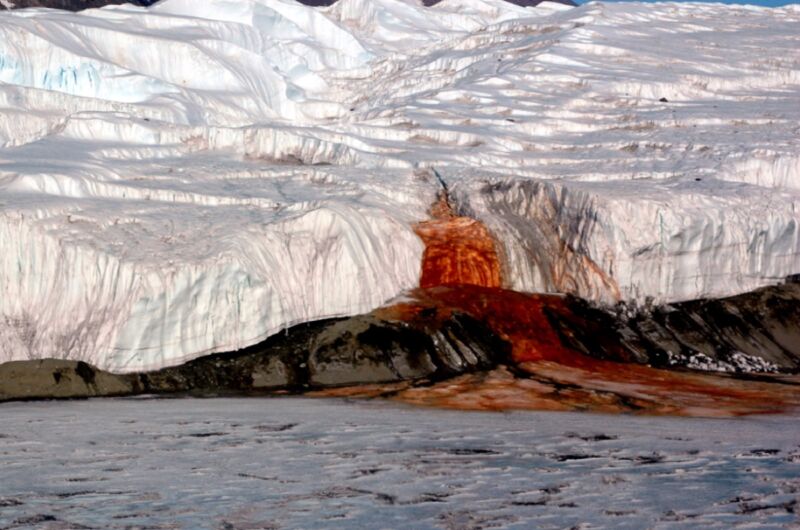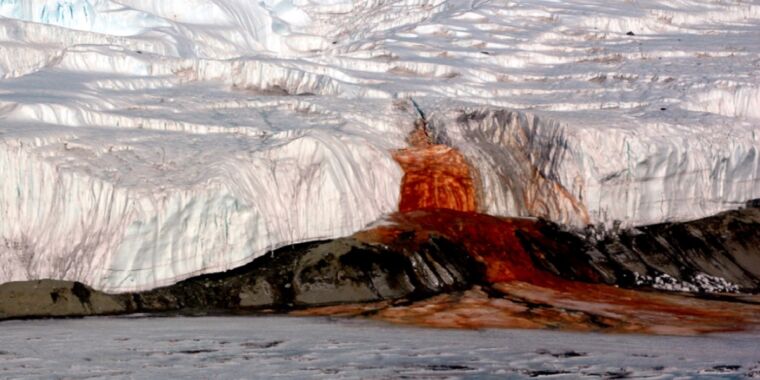
NSF/Peter Rejcek/Public domain
In 1911, an Australian geologist named Thomas Griffith Taylor was exploring a valley in Antarctica when he stumbled upon a strange waterfall. The meltwater flowing from beneath the glacier that now bears Taylor’s name turns a deep red upon coming into contact with the air, earning the site the moniker “Blood Falls.” Various hypotheses have been proposed over the last century to explain the strange phenomenon. A team of scientists now thinks they’ve finally found the answer: tiny nanospheres rich in iron, silica, calcium, aluminum, and sodium, among other elements.
But why has solving this mystery taken more than a century? It seems the nanospheres are amorphous materials, meaning they lack a crystalline structure and hence eluded prior analytical methods looking for minerals because they are not, technically, minerals, according to a recent paper published in the journal Frontiers in Astronomy and Space Science. That might seem like an odd choice of journal for this study, but the Blood Falls at Taylor Glacier is a so-called “analogue” site for astrobiologists and planetary scientists keen to learn more about how life might evolve and thrive in similar inhospitable environments elsewhere in the universe.
“With the advent of the Mars Rover missions, there was an interest in trying to analyze the solids that came out of the waters of Blood Falls as if it was a Martian landing site,” said co-author Ken Livi of Johns Hopkins University. “What would happen if a Mars Rover landed in Antarctica? Would it be able to determine what was causing the Blood Falls to be red? It’s a fascinating question and one that several researchers were considering.”
Those researchers include his co-author, Jill Mikucki of the University of Tennessee, a microbiologist who has been studying the Taylor Glacier and its distinctive waterfall for years. She and her team previously studied samples taken from the site using a suite of techniques also used by NASA for its Mars missions to explore that planet’s surface. Those include Mossbauer spectroscopy used by Spirit and Opportunity; visible to near-infrared spectroscopy (VNIR); mid-far infrared spectroscopy used on the Mars Global Surveyor and Mars Odyssey; in situ x-ray diffraction (XRD) used by Curiosity; and Raman spectroscopy used on Perseverance.
In 2009, Mikucki’s team detected living organisms—17 different types of microbes—in the lake beneath the glacier, likely able to survive the dark, oxygen-free waters by drawing energy from sulfur and iron. In 2014, the team used a special probe called IceMole to directly sample the salty water flowing into the Blood Falls. Mikuchi’s team mapped all the glaciers, caves, and rivers to determine that the water originates from a briny subglacial reservoir rich in minerals, which accumulated in the ice as it moved across the rocks. And they found that the brine was very cold ( minus 7° Celsius, 19° F), rich in iron, with 8 percent sodium chloride. Plus, they were able to isolate a salt-water-loving bacteria that thrives in the cold, anaerobic environment, as well as two other types of bacteria.

